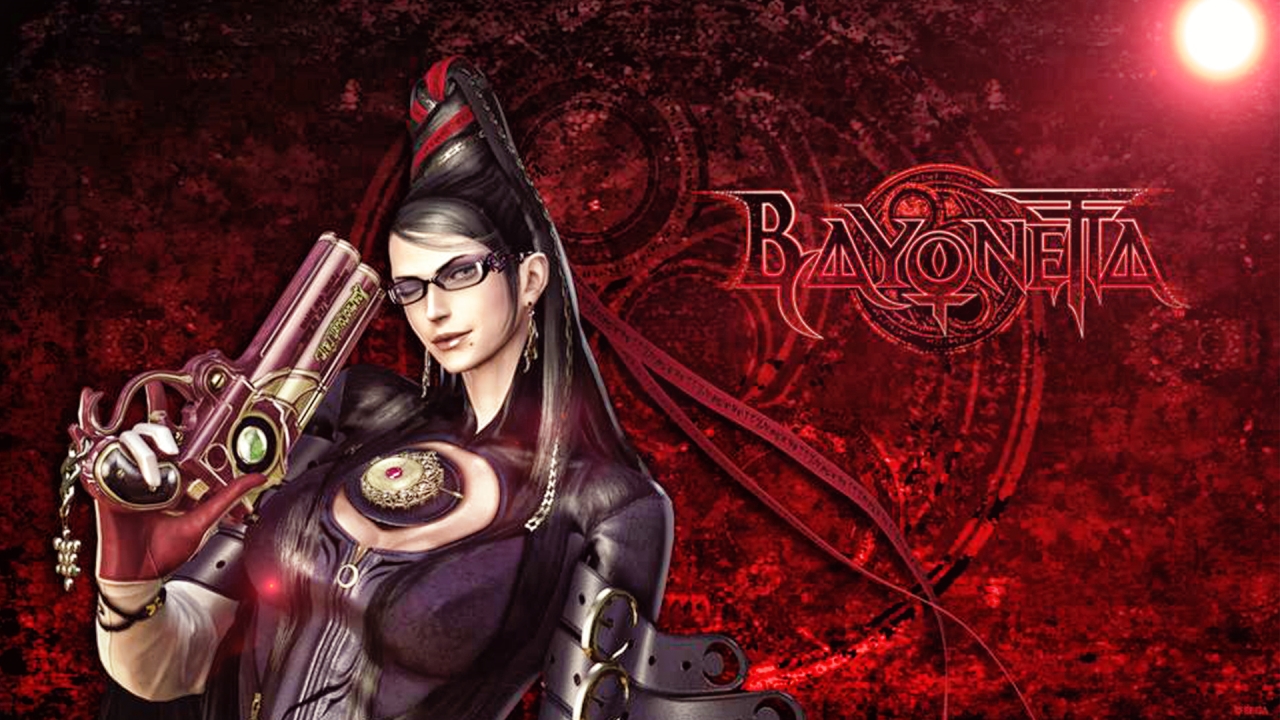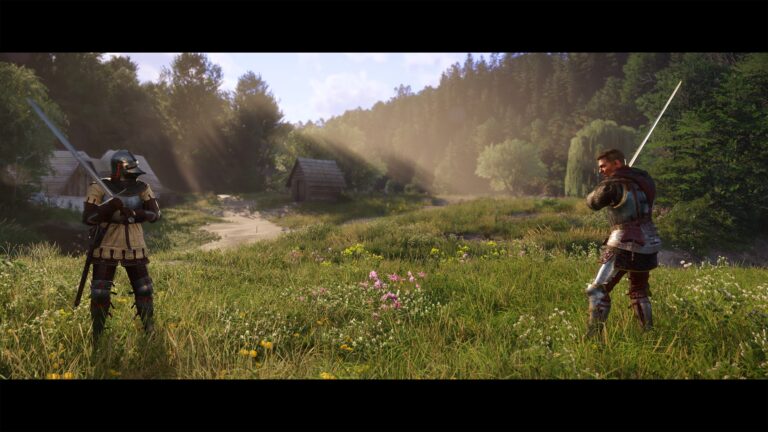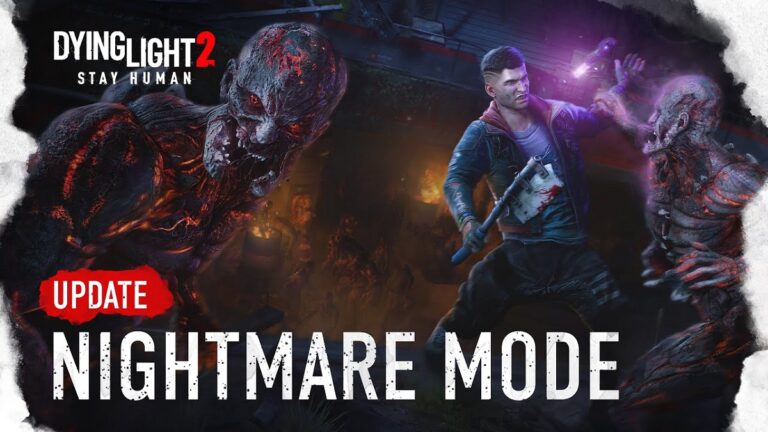After being founded in 2007 as a merger between SEEDS Inc. and ODD Corporation, Platinum Games soon established itself. Comprised of former Clover Studios staff, with big names like Shinji Mikami and Hideki Kamiya, the company debuted in 2009 with MadWorld, Infinite Space, and Bayonetta. While MadWorld and Infinite Space have their merits and audiences, Bayonetta remains one of the studio’s best games eleven years later. As one of the few action games to rival Devil May Cry’s complexity, it is a modern classic.
https://www.youtube.com/watch?v=sbChXNdCo3k
Confident First Impression
After a five-minute lore dump sequence with players fighting waves of enemies across falling debris, the game begins proper. Bayonetta and Enzo, her human informant, visit a cemetery to awaken Rodin, the gunsmith responsible for Bayonetta’s expansive repertoire. Clad in Roman Catholic-inspired nun attire, the awakening ceremony plays it safe and familiar.
That is until angels phase in from another realm, prompting some of the most dazzling fight choreography in gaming, set to upbeat jazz infused with j-pop-influenced vocals. Bayonetta dispatches angel after angel with such effortless grace, it’s impossible not to be enamored by the game’s energy. After stylishly killing dozens of angels, Bayonetta remarks, “As long as there’s music, I’ll keep on dancing” before jumping off frame, transitioning into gameplay.
This opening sequence showcases a level of confidence rivalled only by Devil May Cry 5. As the industry trends more toward mature, narrative-driven territory, traditional video games have had trouble sticking out in their opening moments. While cinematic games can hook players in minutes with high drama, realistic facial animations, or strong cinematography, mechanically driven experiences don’t have that luxury because they’ll still have opening cutscenes before giving players control. Gameplay’s thrills aren’t easily conveyed through non-interactive scenes.
Bayonetta scoffs at this notion, communicating its vision through this scene. The choreography, music, and campy dialogue run the same gamut of endorphins players should feel while playing. Combat’s visual flair is Bayonetta’s focal point, with everything else acting as extensions to that zaniness. Toting a sexy witch whose outfit is comprised of her hair—the same hair used to unleash devastating attacks—it’s as gamey as video games get. Its genre-bending soundtrack and off kilter dialogue complement the combat’s style.
Encouragement Through Accessibility
Bayonetta carves its identity through accessible combat. It’s the only action game with a skill ceiling facilitating such high-level play while encouraging casual players. The Devil May Cry series seems simple on the surface because of its one button combat, which is augmented through additional skills, delayed combo strings, and advanced techniques like jump cancelling. Anybody can mash a single button, but that perceived simplicity makes it uninviting for unskilled players.
With such a limited basic move-set, Devil May Cry’s intermediate combos require dexterity beyond what most casual gamers are capable of possessing. The series introduced optional auto combos, but so does Bayonetta on its easier difficulties. It suffers from the opposite problem to Devil May Cry in that its basic combat uses two buttons instead of one. Bayonetta’s starting combo list also exceeds what Dante and Nero are capable of at the beginning of their respective games with Devil May Cry 4 and 5—Dante being the only exception.
This deceit meshes with its chaotic vision; since basic combos are simpler, the daunting move list facilitates button mashing. Unlike Devil May Cry, whose button mashing ekes out a basic series of sword slashes, Bayonetta’s button mashing results in staggering displays that put action films to shame. Its arresting aesthetics invite curious players to dig deeper, understanding how they pulled off such a magnificent display of destruction. With so much visual stimuli, players will want to experiment with that move list.
Accessibility Bridging the Gap
Its accessibility comes at no expense to high-level play. Advanced techniques like “dodge offset” are poorly explained in-game, but open up a multitude of options when discovered. As with any Platinum action game, there’s a dodge button. Bayonetta can employ a standard dodge or activate witch time, slowing enemies around the player when the dodge is performed with perfect timing.
Bayonetta’s aggressive enemies necessitate dodging, but dodging plays a major role when used with extended combos. The result, “dodge offset”, opens a pandora’s box. In Bayonetta, as with most action games, dodges reset combos. For example, one combo is punch, punch, punch, kick, delay, then a kick. This combo ends with a wicked weave, a final gigantic foot (or hand depending on whether it’s a punch or kick) comprised of Bayonetta’s hair, that deals extra damage.
Learning which combos end in wicked weaves and when to use them plays into the game’s strategy. Because they deal so much damage, mastering “dodge offset” becomes imperative to high level play. Players are disadvantaged without it.
In late-game and more difficult scenarios, finishing combos among the flurry of unrelenting enemies is impossible with “dodge offset”. By holding the button down, players can extend that portion of the combo. Dodging during this extension allows Bayonetta to continue the combo without resetting.
Bayonetta takes it further with additional weapons like a katana, elementally charged claws, and nunchakus. Players can also switch between two weapon sets on the fly. Combined with the massive move list, delayed combo strings, “dodge offset”, jump cancelling, “witch time”, and ranged weaponry, Bayonetta becomes an experimental playground.
Bayonetta’s Lore Untapped
Bayonetta’s story is a flimsy means of funneling players from action scene to action scene, but it’s framed within an interesting world. Despite the game’s attitude and design favoring pure gameplay over storytelling, Platinum Games put an equal amount of effort into crafting its world. The overseers of history, the Umbra witches and Lumen sages, maintained an uneasy alliance for centuries in the name of maintaining a balance of power.
Both clans, while similar at a glance, attain their powers through different means; Umbra witches from the moon and Lumen sages from the sun. The 15th century witch hunts lead to a near disintegration of the Umbra, with Bayonetta being one of the few remaining Umbra witches
The universe is split across three planes of existence:
Paradiso – the angels’ residence, over which the Lumen Sages keep close watch.
Human Realm – formerly known as the Realm of Chaos.
Inferno – the game’s equivalent to hell; also, the world to which the Umbra are most closely tied.
Bayonetta also has an intermediary plane of existence akin to purgatory among the trinity of realities. There’s a lot to unpack. Each text entry is written from Luka’s perspective, a journalist committing his life’s work to proving the witches’ and sages’ existence. They’re written from an eccentric character’s perspective, but are tonally inconsistent. Some entries read like the ravings of an obsessive, albeit educated, witch hunting journalist, whereas others read like typical lore dumps.
Making matters worse, all this strong world building is tucked away behind entries, with the game’s story events providing no impact for players that ignore or skim through them. It’s one of Bayonetta’s few rough spots.
Bayonetta 11 Years Later
Bayonetta burst on the scene in 2009 with its infectious energy and exciting, fast-paced combat. It remains one of the best in its genre with its no-frills pacing and deep gameplay. The creativity allowed by its toolset showcases an undeniable craft; all the more impressive for the studio’s first character action game in a year with two other releases.
No related posts.






